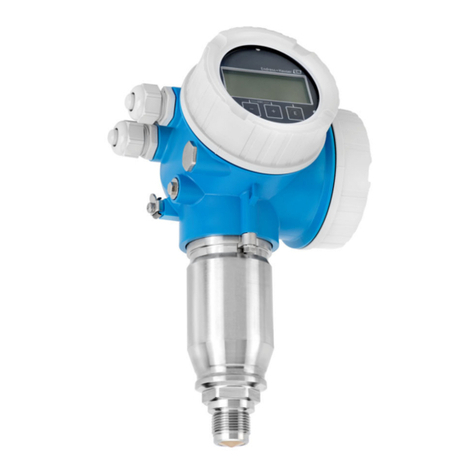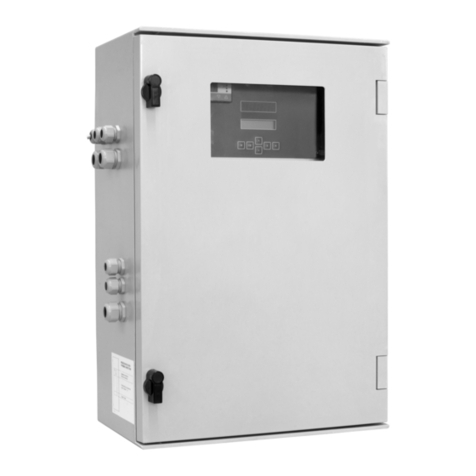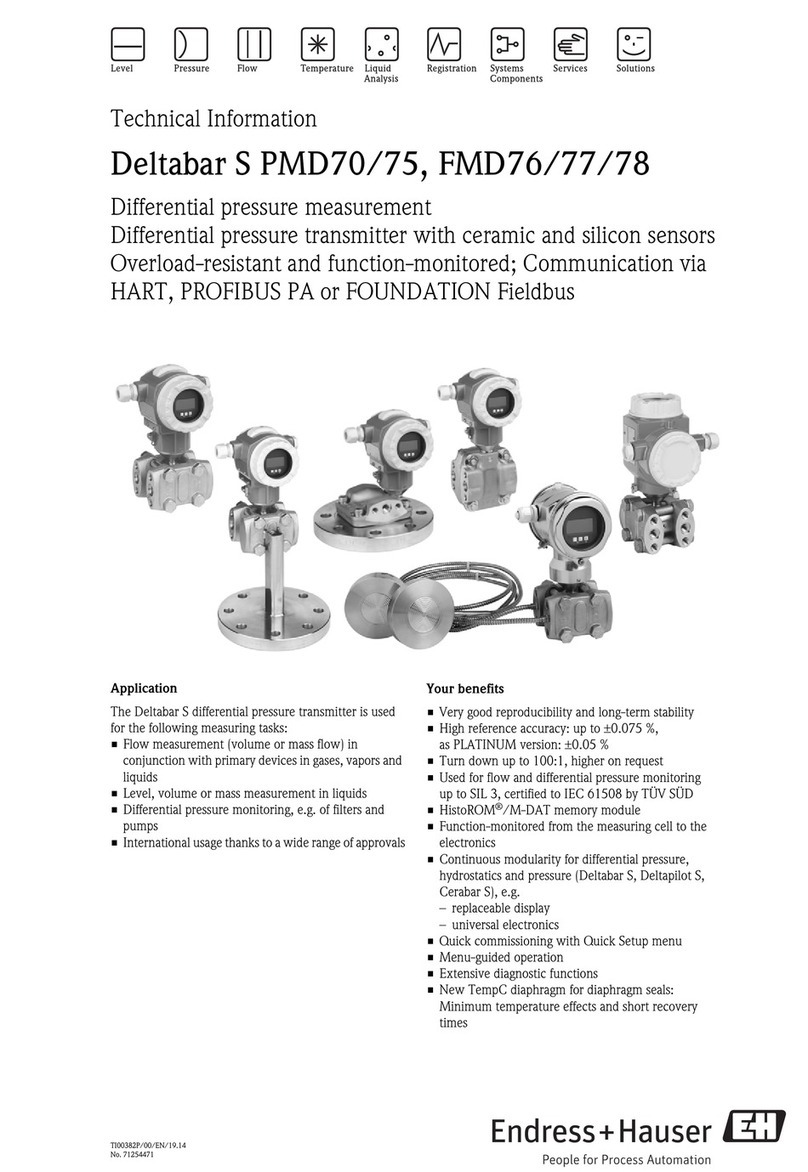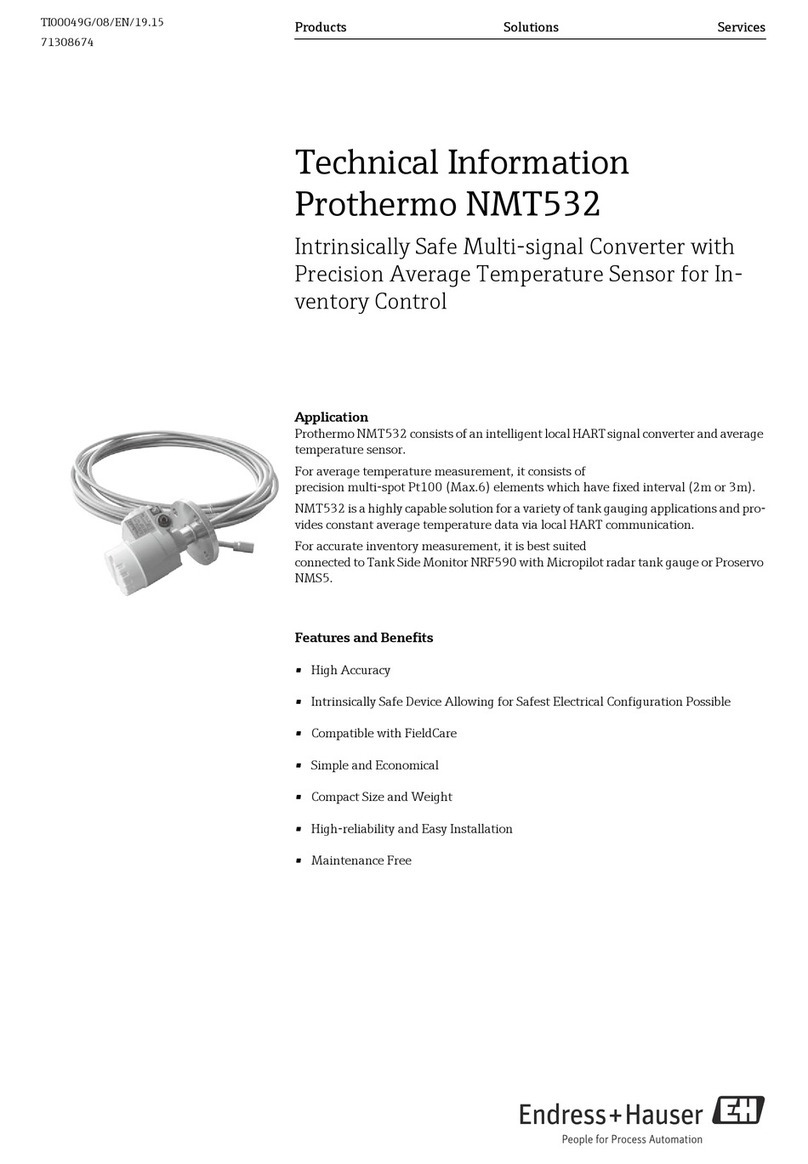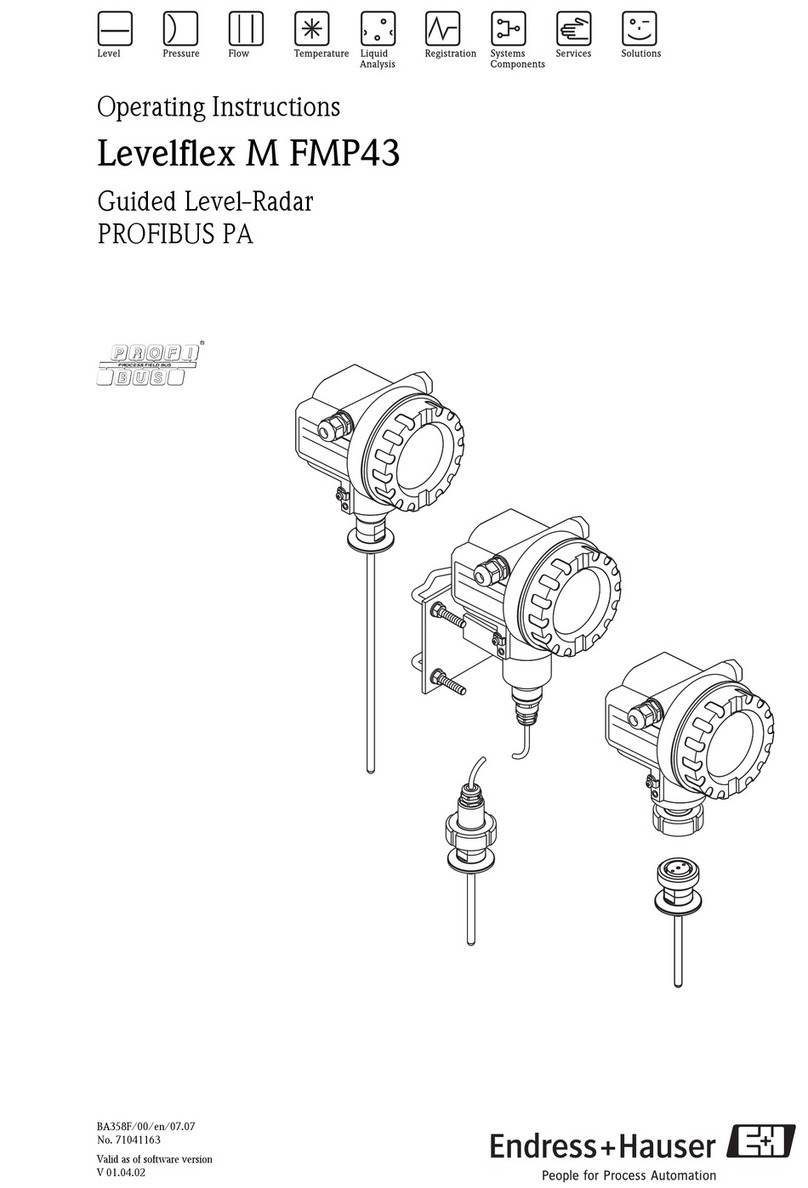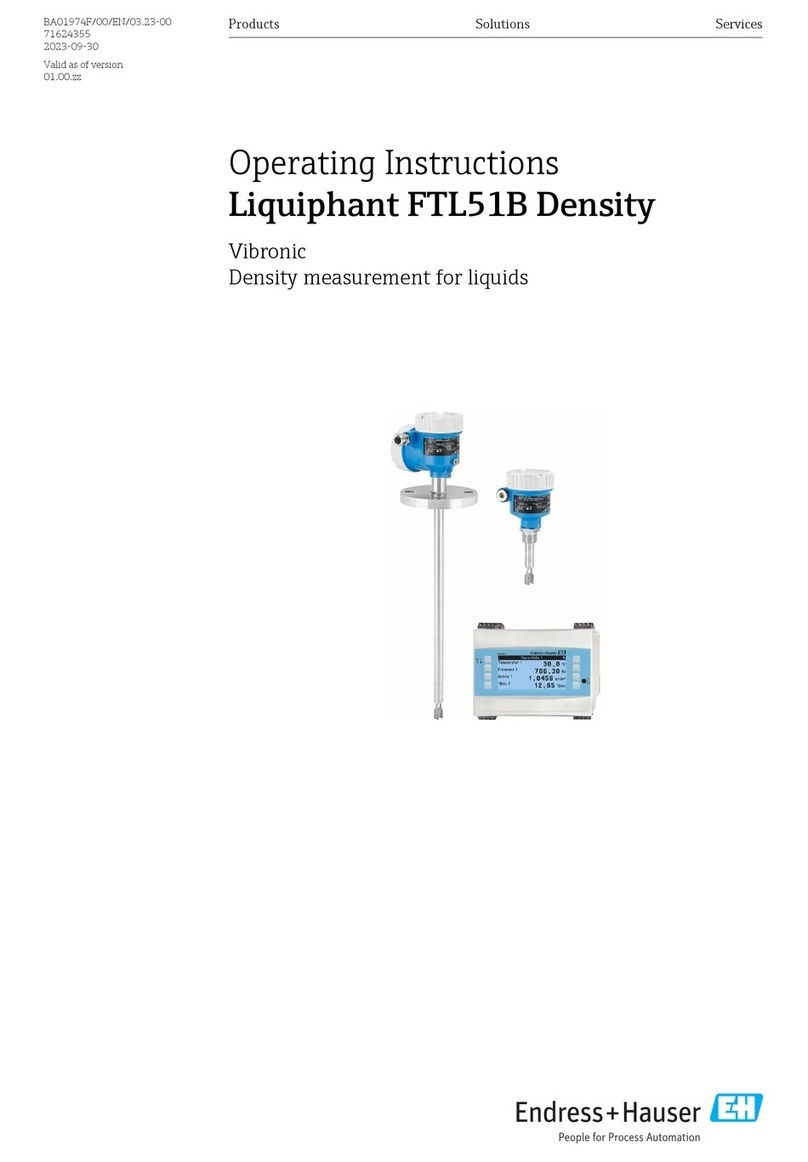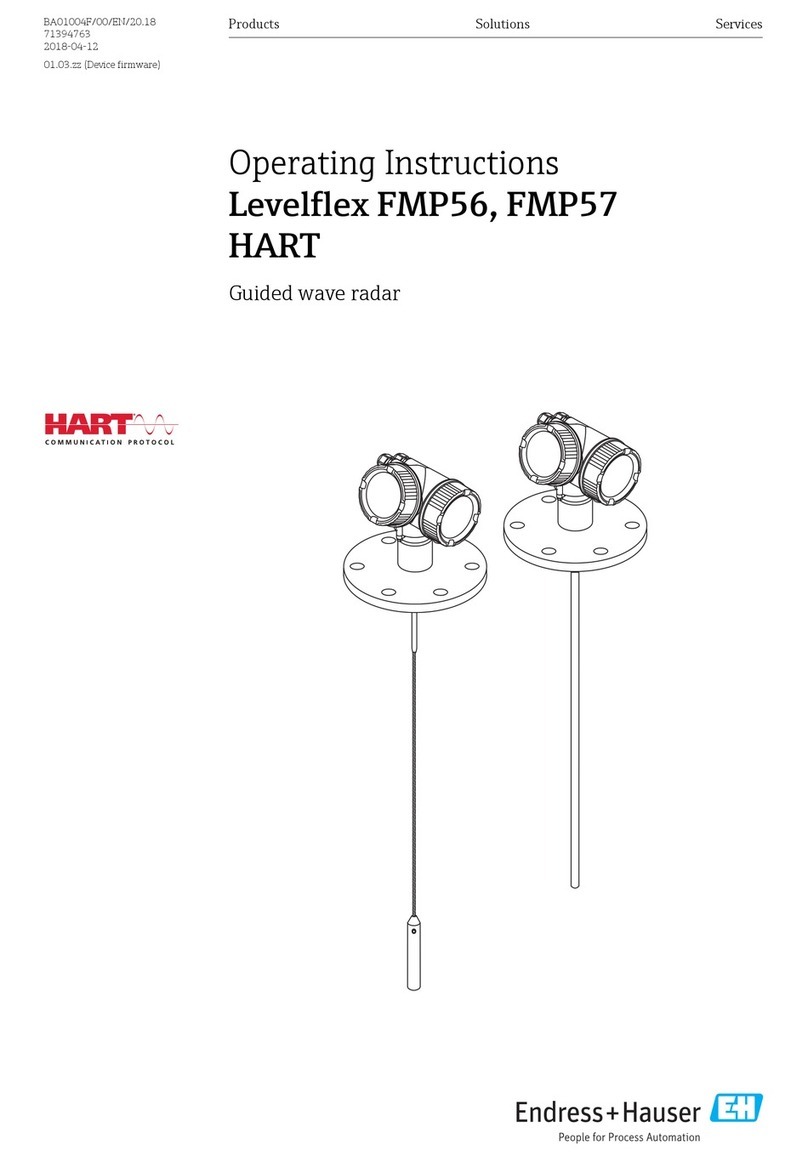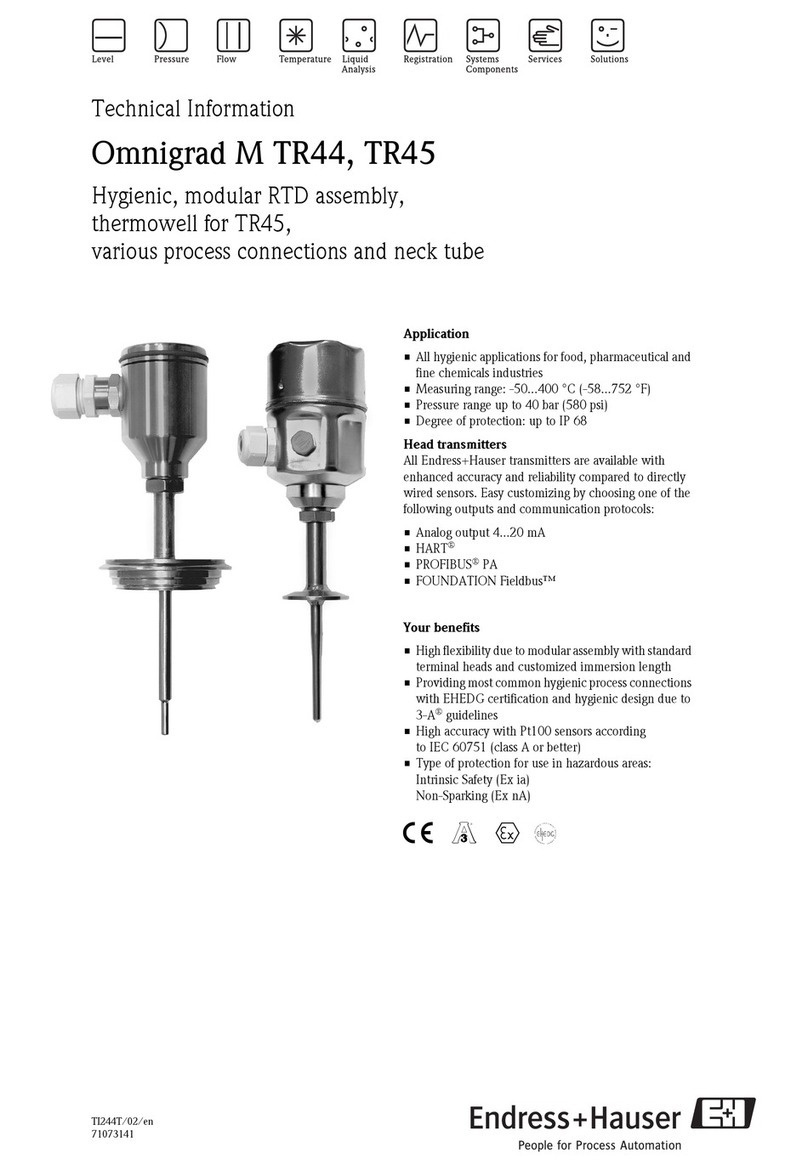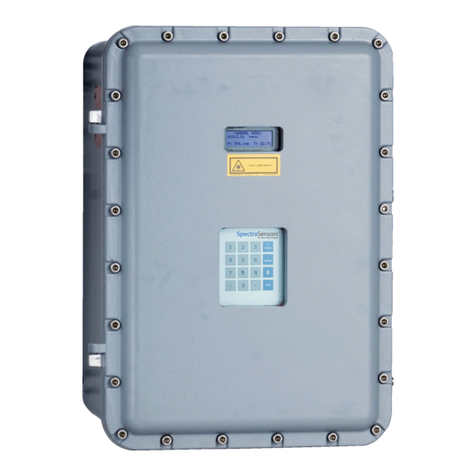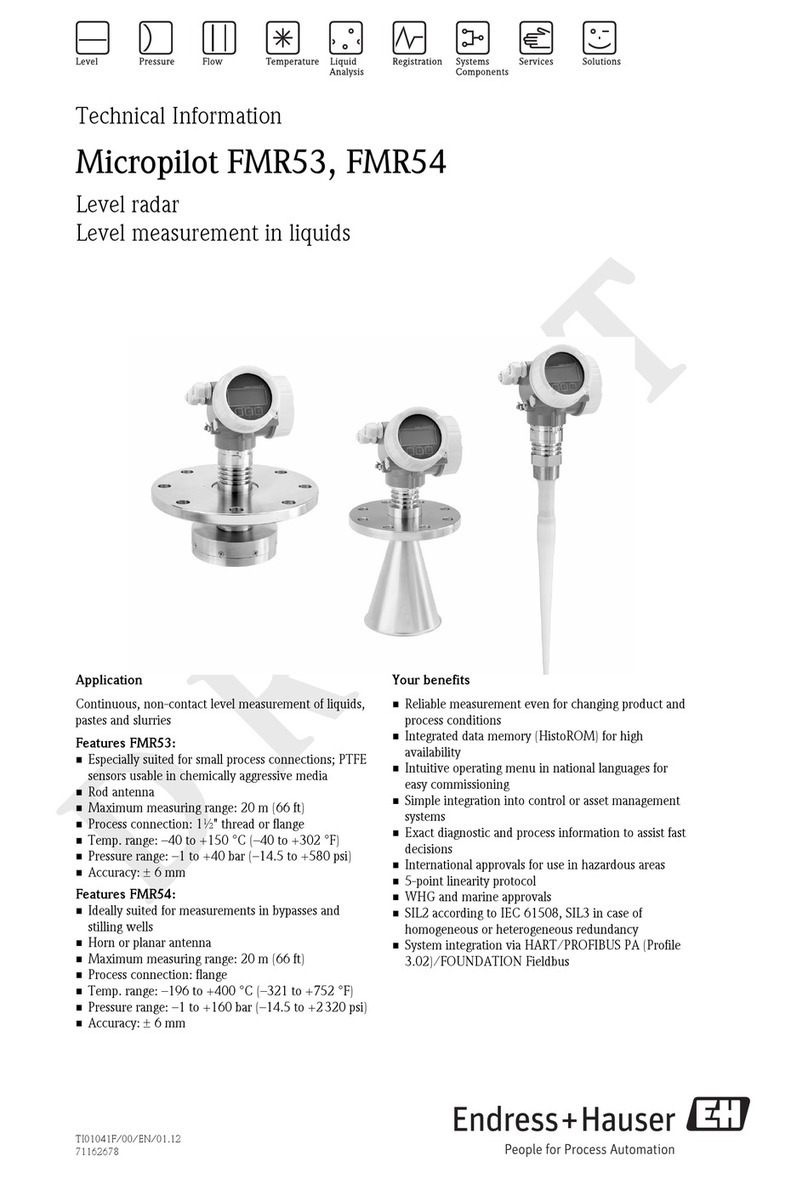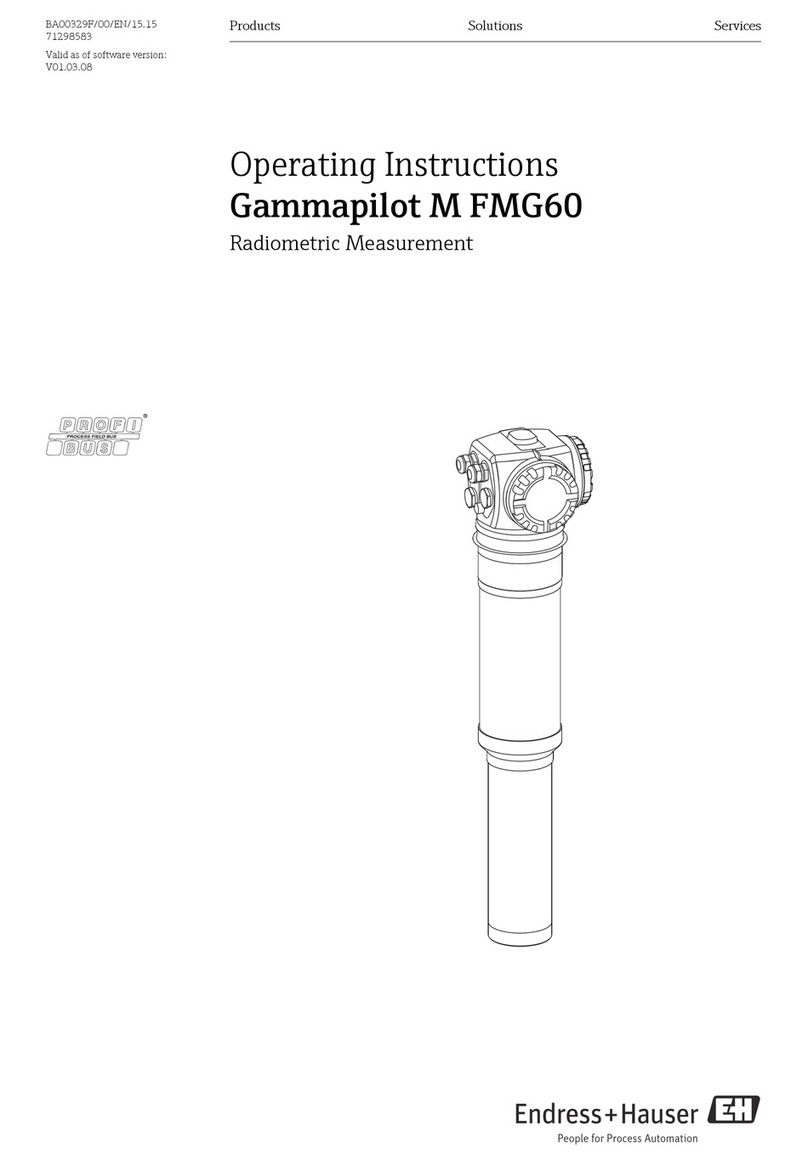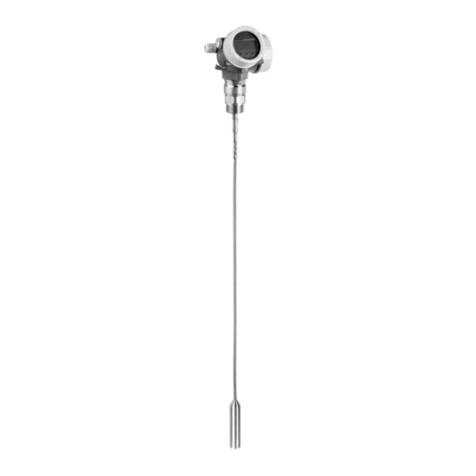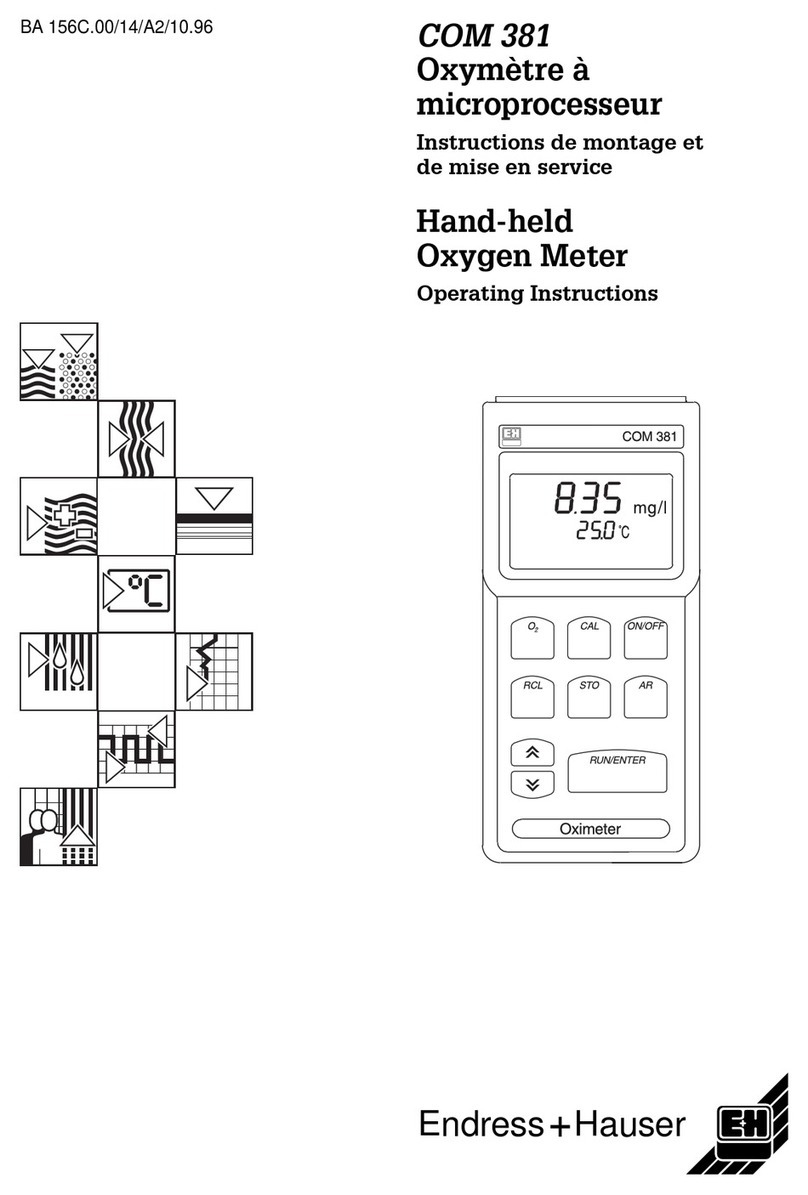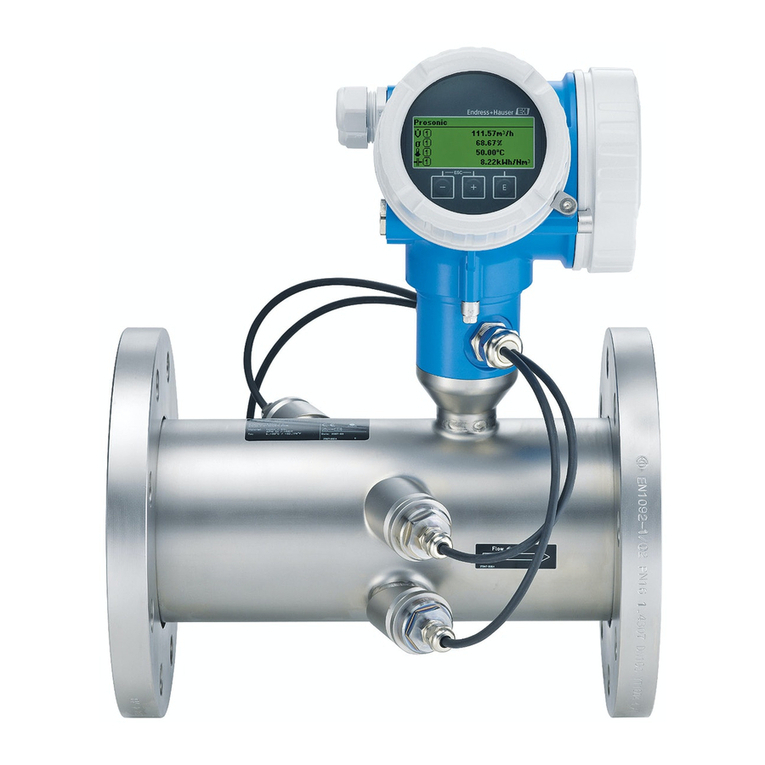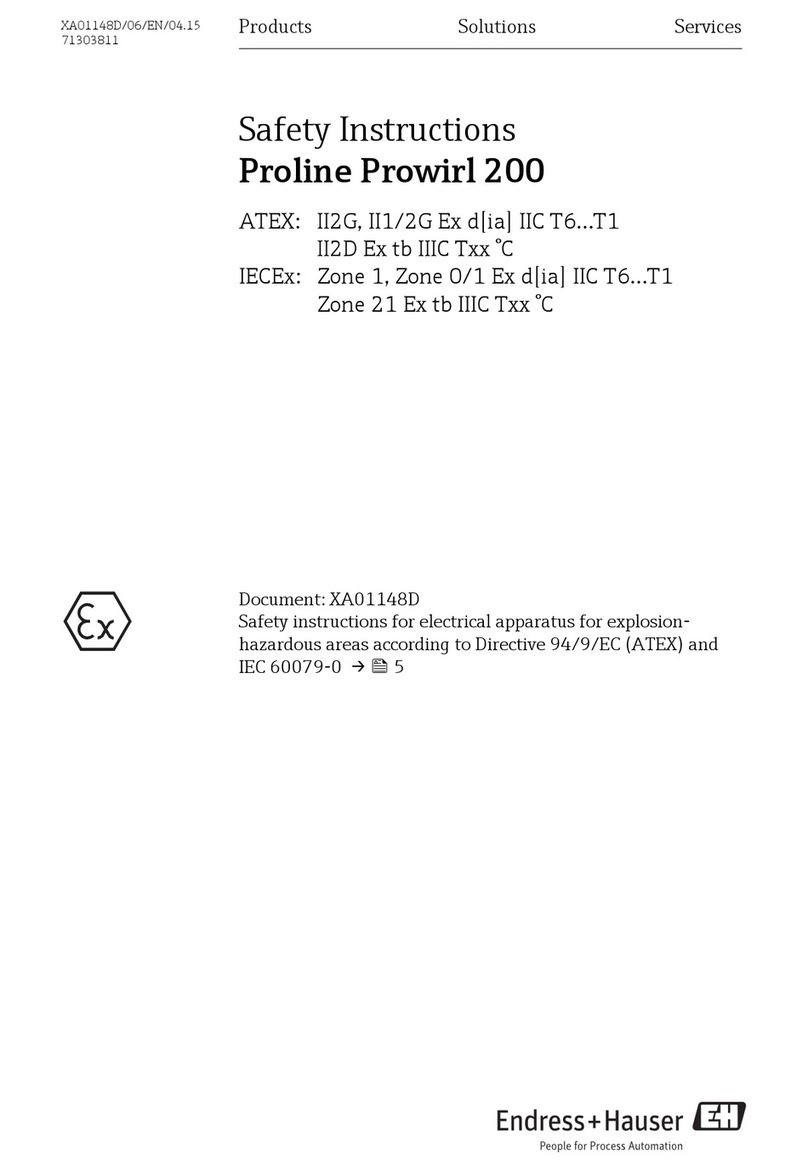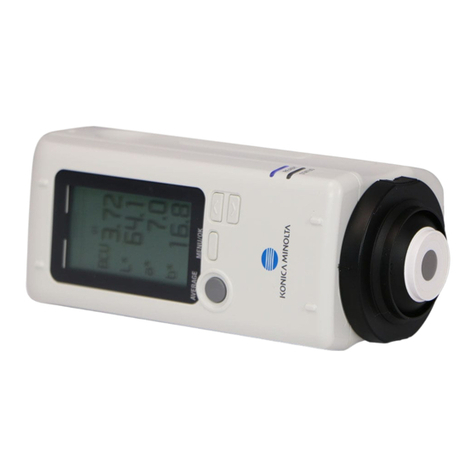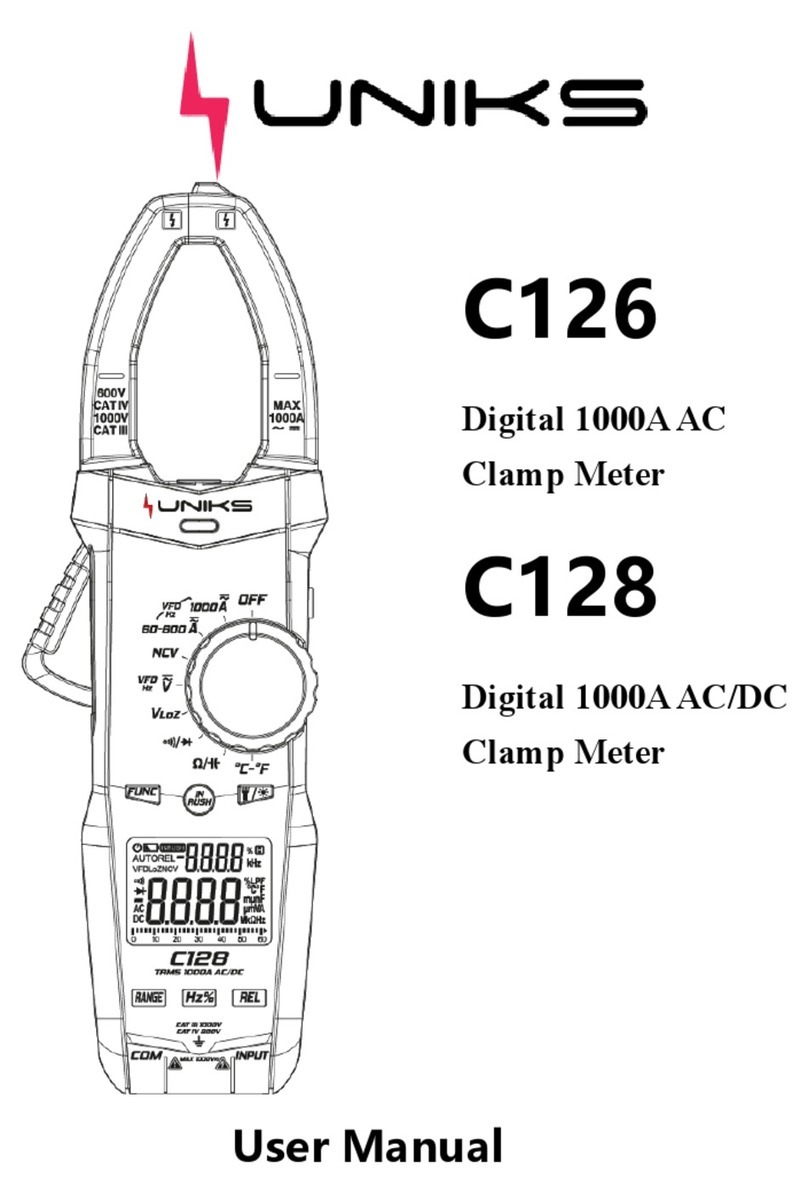0NEPSI Zone 1, Zone 21 Proline Promass 83, 84
2Endress+Hauser
General warnings • For installation, use and maintenance of the flow meter, the instruction manual and the following standards
shall be observed:
– GB50257-1996 "Code for construction and acceptance of electric device for explosive atmospheres and
fire hazard electrical equipment installation engineering"
– GB3836.13-1997 "Electrical apparatus for explosive gas atmospheres – Part 13: Repair and overhaul for
apparatus used in explosive gas atmospheres"
– GB3836.15-2000 "Electrical apparatus for explosive gas atmospheres – Part 15: Electrical installations in
hazardous area (other than mines)"
– GB3836.16-2006 "Electrical apparatus for explosive gas atmospheres – Part 16: Inspection and
maintenance of electrical installation (other than mines)"
– GB15577-1995: Safety regulations for dust explosion prevention and protection". (Only if installed in
dust hazardous areas.)
– GB12476.2-2006 "Electrical apparatus for use in the presence combustible dust – Part 1-2: Electrical
apparatus protected by enclosures and surface temperature limitation – selection, installation and
maintenance" (only if installed in dust hazardous areas).
• Any maintenance shall be done after power off or the area known to be non-hazardous.
• The flow meter shall not be modified in order to ensure the explosion protection performance of the
equipment. Any change may impair safety.
• Installation, connection to the electricity supply, commissioning and maintenance of the devices must be
carried out by qualified specialists trained to work on Ex-rated devices.
• Compliance with all of the technical data of the device (see nameplate) is mandatory.
• Open the device only when it is de-energized (and after a delay of at least 10 minutes following shutdown
of the power supply) or in non-hazardous (classified) locations.
• It is not permissible to connect the service adapter whilst the atmosphere is considered to be explosive.
• Opening the transmitter housing and the connection housing of the remote version is only permitted for a
brief time. During this time, ensure that no dust or water enters the housing.
• To guarantee resistance to dust and water, the transmitter housing, the connection housing of the remote
version and the cable entries must be tightly sealed.
• Use of the devices is restricted to mediums against which the process-wetted materials are adequately
resistant.
• The suitability of the device in the event of simultaneous occurrence of gas-air and dust-air mixtures
requires an additional assessment.
Special conditions The device must be integrated into the potential equalization system. Potential must be equalized along
the intrinsically safe sensor circuits. Further information is provided in the “Potential equalization” section
on Page 10.
Installation instructions • For terminals No. 20 to No. 27 of the transmitter, only devices with ratings Um≤260 V and Im≤500 mA
are allowed to be connected (does not apply to intrinsically safe circuits).
• The measuring device must only be used in the permitted temperature class.
The values of the individual temperature classes can be found in the temperature tables on Page 6.
For Zone 21: The surface temperature of the measuring device must not exceed 2/3of the ignition
temperature of a dust cloud. The maximum surface temperature must maintain a safe distance of 75 °C to
the smolder temperature of a dust layer of 5 mm.
Example: Operation in temperature class T4 (135 °C) is, therefore, suitable for dust with an ignition
temperature of 202.5 °C (1.5 x 135 °C or 135 °C = 2/3of 202.5 °C) and a smolder temperature of 210 °C
(135 °C + 75 °C).
• The following applies when using the terminal compartment in type of protection "flameproof/Ex d":
Only cable entries and cable glands, which are approved by NEPSI in accordance with GB3836.1-2000 and
GB3836.2-2000 and which are suitable for an operating temperature of up to 80 °C, they shall be used.
• The following applies when using the terminal compartment in type of protection "increased safety/Ex e":
Only cable entries, cable glands and blanking plugs, which are approved by NEPSI in accordance with
GB3836.1-2000 and GB3836.3-2000 and which are suitable for an operating temperature of up to 80 °C
and for an ingress protection of IP 67, they shall be used. Alternatively Ex e cable glands specified or
provided by Endress+Hauser Flowtec AG can be used. The cables must be installed in such a way, that they
are fixed in place in order to ensure adequate strain relief.
• Suitable cables and suitable, certified cable glands, cable entries and blanking plugs must be used for
measuring devices operated at temperatures below –20 °C.
• The cable entries and openings not used must be sealed tight with suitable components.

